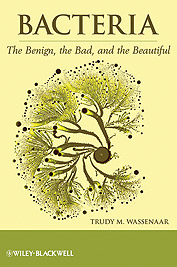Research consulting
EXAMPLE. A client looked for a novel strategy to identify virulence genes from a bacterium of which the genome sequence was available but virulence genes had not been identified. A new technique was developed by MMGC to assess polymorphisms without knowing the phenotype of these genes. The project resulted in a complete new area of research.
EXAMPLE. An on-site consulting session was organised for the research group of a medical microbiology department. Each researcher presented his or her work in a 1-hour face-to-face meeting in which practical problems and future strategies were discussed. Follow-up advise was provided upon demand by Email and web-based conferencing. As a result of fruitful discussions, several projects progressed more rapidly and a number of scientific publications were written in collaboration as a result of the assistance provided by MMGC.
EXAMPLE. A group of enthousiast researchers had sequenced a highly variable region of a human pathogen. The sequences told their story, but what did it all mean? From a wealth of information, with the help of MMGC the most important data were subtracted, ordened, and interpreted for clinical relevance, and subsequently published in a high-standard journal.
Bioinformatic analysis
EXAMPLE. A client was interested in patterns observed in the ORF distribution of a particular micro-organism and would like to know the biological relevance of the observations. MMGC analysed the patterns and correlated to the biological properties of the organism. This opened a new field of computer-based research.
EXAMPLE. A client had performed subtractive hybridization with two strains of one bacterial species. The resulting clones had been partially sequenced. Most gene fragmens had no or only weak hits in BLAST. A thorough analysis was performed by MMGC to identify the top 10 candidates to focus the wet-lab research.This resulted in a fast and resource-efficient breakthrough.
EXAMPLE. A client wanted to identify particular gene combinations in a bacterial genome responsible for a particular, complex phenotype. Total bacterial genome comparison was performed with PSI-BLAST and rthe outcome was elated to known phenotypes to deduce this complex information to workable hypotheses.
EXAMPLE. A client was working on a particular antibiotic resistant gene and ordered a literature review. This was extended to a review of available sequences. Phylogenetic anaysis, performed at MMGC, resulted in a new mechanism of spread of this resistance gene, which opened a new field of laboratory research.
Literature research
EXAMPLE. An academic research group asked for a literature review, to spend the leftover of a research grant. This resulted in a high-quality review paper, which not only increased the visibility of the research group, but also identified knowledge gaps which were used to draft a follow-up grant proposal.
EXAMPLE. A company producing detection kits wanted to extend their range products, but needed assistance in analysing the latest publications in a complex research area. In close collaboration with their Research and Development department, MMGC identified the 'hot' literature to quickly design the most suitable detection strategy.
EXAMPLE. A client demanded a thorough literature review on bacterial virulence, and the spread of virulence genes in natural bacterial populations. MMGC produced a report reviewing over 300 references, which was printed on CD, with all reference links providing the abstract of the cited papers.
EXAMPLE. A company had the impression their product was not receiving a fair press. It commissioned MMGC to perform a literature search and asked for an unbiased opinion. The results were not completely what the company had wanted to hear, but sometimes an independent mind is all it needs to be put on the right track.
EXAMPLE. A governmental agency wanted an update on genetically modified animals in the food chain. An extensive literature search by MMGC was summarized in a comprehensible report, written for the non-expert.


 Bacteria:
Bacteria: